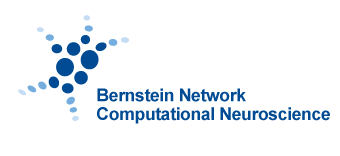Bach, Mozart or Jazz
Physicists at the Max Planck Institute for Dynamics and Self-Organization (MPI-DS) have investigated to which extent a piece of music can evoke expectations about its progression. They were able to determine differences in how far compositions of different composers can be anticipated. In total, the scientists quantitatively analyzed more than 550 pieces from classical and jazz music.

Physicists at the MPI-DS have investigated the variability in music pieces by different composers. They found a high initial autocorrelation of pitches, which ends relatively abruptly after a certain time, thus making further anticipation impossible. (image generated with AI) © MPI-DS
Bernstein members involved: Theo Geisel
It is common knowledge that music can evoke emotions. But how do these emotions arise and how does meaning emerge in music? Almost 70 years ago, music philosopher Leonard Meyer suggested that both are due to an interplay between expectation and surprise. In the course of evolution, it was crucial for humans to be able to make new predictions based on past experiences. This is how we can also form expectations and predictions about the progression of music based on what we have heard. According to Meyer, emotions and meaning in music arise from the interplay of expectations and their fulfillment or (temporary) non-fulfillment.
A team of scientists led by Theo Geisel at the MPI-DS and the University of Göttingen have asked themselves whether these philosophical concepts can be quantified empirically using modern methods of data science. In a paper published recently in “Nature Communications”, they used time series analysis to infer the autocorrelation function of musical pitch sequences; it measures how similar a tone sequence is to previous sequences. This results in a kind of “memory” of the piece of music. If this memory decreases only slowly with time difference, the time series is easier to anticipate; if it vanishes rapidly, the time series offers more variation and surprises.
In total, the researchers Theo Geisel and Corentin Nelias analyzed more than 450 jazz improvisations and 99 classical compositions in this way, including multi-movement symphonies and sonatas. They found that the autocorrelation function of pitches initially decreases very slowly with the time difference. This expresses a high similarity and possibility to anticipate musical sequences. However, they found that there is a time limit, after which this similarity and predictability ends relatively abruptly. For larger time differences, the autocorrelation function and memory are both negligible.
Of particular interest here are the values of the transition times of the pieces where the more predictable behavior changes into a completely unpredictable and uncorrelated behavior. Depending on the composition or improvisation, the scientists found transition times ranging from a few quarter notes to about 100 quarter notes. Jazz improvisations typically had shorter transition times than many classical compositions, and therefore were usually less predictable. Differences could also be observed between different composers. For example, the researchers found transition times between five and twelve quarter notes in various compositions by Johann Sebastian Bach, while the transition times in various compositions by Mozart ranged from eight to 22 quarter notes. This implies that the anticipation and expectation of the musical progression tends to last longer in Mozart’s compositions than in Bach’s compositions, which offer more variability and surprises.
For Theo Geisel, the initiator and head of this research project, this also explains a very personal observation from his high school days: “In my youth, I shocked my music teacher and conductor of our school orchestra by saying that I often couldn’t show much enthusiasm for Mozart’s compositions,” he says. “With the transition times between highly correlated and uncorrelated behavior, we have now found a quantitative measure for the variability of music pieces, which helps me to understand why I liked Bach more than Mozart.”





